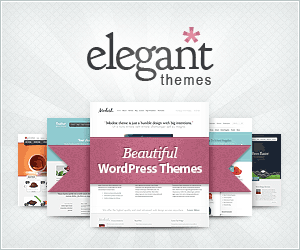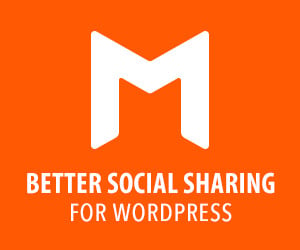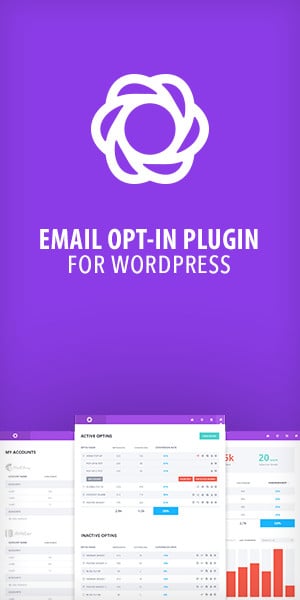Budgeting and forecasting for business are crucial tools for achieving financial success. They enable businesses to predict future financial performance, allocate resources effectively, and identify potential financial challenges. An effective budget and forecast can help a business increase profits by an average of 20%, according to industry experts. This guide offers strategies for implementing robust budgeting and forecasting practices to enhance financial decision-making, improve cash flow management, and support long-term growth.
Understanding the Basics of Budgeting and Forecasting
Budgeting and forecasting are crucial for steering a business toward success. Knowing how to allocate resources and predict future performance can make or break an organization. Let’s dive into the fundamentals and discover why these elements are indispensable for any thriving enterprise.
The Importance of Financial Planning for Business Success
Financial planning is the backbone of any successful business. It provides a roadmap for achieving financial goals and managing resources efficiently. When businesses have a clear financial plan, they can focus on growth, reduce uncertainties, and ensure long-term sustainability. Effective financial planning also helps in identifying potential risks and opportunities, thereby aiding in strategic decision-making.
Successful companies use financial planning to set realistic objectives and measure their progress. This involves creating detailed budgets that account for all operational costs, expected revenues, and profitability margins. Businesses that prioritize financial planning can better allocate resources, improving overall productivity and efficiency.
Moreover, financial planning is vital in attracting investors and securing funding. Investors seek businesses with a clear financial vision and strategy. A solid financial plan reflects the company’s commitment to growth and stability, making it an attractive prospect for investment. Thus, financial planning is not just a tool for internal management but a strategic asset in the competitive business landscape.
Key Differences Between Budgeting and Forecasting
Budgeting and forecasting are often used interchangeably, yet they serve distinct purposes. Budgeting involves setting a plan for how a business intends to manage its finances over a specific period. It includes revenue projections, expense allocations, and profit targets. Forecasting, however, is an estimate of future financial outcomes based on current data and trends.
The primary difference lies in their scope and detail. Budgets are typically more detailed and cover shorter periods, such as a fiscal year. They serve as a baseline for financial performance and guide day-to-day operations. Forecasts, on the other hand, are broader and can extend over several years, providing a long-term view of business performance.
Another key distinction is flexibility. Budgets are usually fixed and reviewed annually, whereas forecasts are dynamic and updated regularly. This dynamic nature of forecasting allows businesses to adapt to market changes and unforeseen events, ensuring they remain aligned with their strategic goals.
Common Challenges and How to Overcome Them
Budgeting and forecasting come with their own set of challenges. One common issue is the accuracy of data used in predictions. Inaccurate data can lead to flawed budgets and forecasts, affecting overall business performance. To overcome this, businesses should invest in reliable data collection and analysis tools.
Another challenge is the resistance to change among employees. Implementing new budgeting or forecasting processes often requires a shift in mindset. Companies can address this by involving employees in the planning process and providing training to enhance their understanding and skills.
Resource constraints also pose a significant challenge. Limited resources can hinder the development of comprehensive budgets and forecasts. Businesses can overcome this by prioritizing key areas and leveraging technology to streamline processes. Collaborating with financial experts can also provide valuable insights, helping businesses navigate these challenges effectively.
Advanced Techniques for Effective Budgeting in Business
Once the basics are mastered, it’s time to explore advanced budgeting strategies. These techniques can enhance the accuracy and efficiency of financial planning. They go beyond traditional methods, providing businesses with a competitive edge. Let’s explore how technology, regular reviews, and contingency plans can transform your budgeting process.
Utilizing Technology to Enhance Budget Accuracy
Technology plays a pivotal role in modern budgeting. Advanced software solutions offer powerful tools for creating precise budgets and forecasts. These tools automate data collection and analysis, reducing the risk of human error and improving accuracy.
Cloud-based platforms enable real-time data access and collaboration, allowing teams to work together seamlessly. Businesses can integrate financial software with other systems to ensure data consistency and streamline processes. This integration helps in maintaining accurate records and simplifies the budgeting process.
Moreover, predictive analytics tools can forecast future trends with greater precision. These tools use historical data and machine learning algorithms to identify patterns and make informed predictions. By utilizing technology, businesses can create more reliable budgets and adapt swiftly to market changes.
Conducting Regular Budget Reviews and Adjustments
Regular budget reviews are essential for maintaining financial health. They provide insights into the effectiveness of current strategies and highlight areas for improvement. By conducting these reviews, businesses can ensure that they remain on track to achieve their financial goals.
Reviews involve comparing actual performance against budgeted figures, identifying variances, and analyzing their causes. This analysis helps in understanding market trends and adjusting strategies accordingly. It also allows businesses to reallocate resources to more profitable areas, maximizing returns.
Adjustments should be made as needed to reflect changes in the business environment. This flexibility ensures that budgets remain relevant and aligned with the company’s objectives. By embracing a proactive approach to budget management, businesses can optimize their financial performance.
Incorporating Contingency Plans in Business Budgets
Contingency planning is a crucial aspect of effective budgeting. Unforeseen events can disrupt even the most well-crafted financial plans. Having a contingency budget ensures that businesses are prepared for unexpected expenses or revenue shortfalls.
To create a contingency budget, businesses should identify potential risks and estimate their financial impact. This involves assessing economic conditions, market volatility, and industry-specific challenges. Based on this assessment, a portion of the budget should be set aside as a financial cushion.
Regularly reviewing and updating contingency plans ensures they remain relevant. This proactive approach minimizes the impact of disruptions and enhances the company’s resilience. By integrating contingency plans into their budgeting process, businesses can safeguard their financial stability.
Leveraging Forecasting for Strategic Business Growth
Forecasting is more than just predicting numbers. It’s a strategic tool that can propel business growth. This section explores how data-driven methods, alignment with objectives, and best practices in projections can unlock new opportunities. Let’s discover how to harness the power of forecasting for sustainable growth.
Implementing Data-Driven Forecasting Methods
Data-driven forecasting is revolutionizing the way businesses plan for the future. By leveraging data analytics, companies can make informed predictions about market trends and customer behavior. This approach ensures that forecasts are based on reliable and up-to-date information.
Advanced analytics tools can process large volumes of data, uncovering insights that might otherwise go unnoticed. These tools help businesses identify patterns, predict demand, and optimize resource allocation. By implementing data-driven methods, companies can enhance the accuracy and relevance of their forecasts.
Furthermore, businesses can use scenario analysis to explore different outcomes and prepare for various possibilities. This technique allows companies to assess the impact of potential changes in the market and adjust their strategies accordingly. Data-driven forecasting empowers businesses to navigate uncertainty with confidence.
Aligning Forecasting with Business Objectives
Alignment with business objectives is crucial for effective forecasting. Forecasts should reflect the company’s strategic goals and support its long-term vision. This alignment ensures that all financial plans are geared towards achieving overall business success.
To achieve alignment, businesses should involve key stakeholders in the forecasting process. This collaboration fosters a shared understanding of objectives and priorities. It also ensures that forecasts are realistic and tailored to the company’s unique needs.
Regular communication between departments is essential for maintaining alignment. By sharing insights and updates, businesses can ensure that everyone is on the same page. This collaborative approach enhances the effectiveness of forecasts and supports informed decision-making.
Best Practices for Accurate Financial Projections
Accurate financial projections are vital for strategic planning. They provide a foundation for making informed decisions and assessing potential risks. Adopting best practices in financial projections can significantly enhance their reliability.
One best practice is to use a combination of quantitative and qualitative data. While quantitative data provides numerical insights, qualitative data offers context and depth. This combination ensures that projections are comprehensive and well-rounded.
Another practice is to regularly update projections with new data. This ensures that they remain relevant and reflect the latest market conditions. Businesses should also incorporate a margin of error to account for uncertainties and potential deviations.
By following these best practices, businesses can create accurate and actionable financial projections. These projections serve as a valuable tool for planning and growth, helping companies achieve their strategic objectives.
Conclusion
The article delves into budgeting and forecasting as essential tools for financial success in businesses. It emphasizes understanding the basic differences and importance of these tools in financial planning. Challenges associated with budgeting and forecasting are addressed, along with strategies to overcome them. Advanced techniques are discussed, including the use of technology, regular reviews, adjustments, and incorporating contingency plans. The article concludes with methods for leveraging forecasting to ensure strategic growth through data-driven approaches and alignment with business objectives.
FAQ
What are the key benefits of implementing budgeting and forecasting in business?
Budgeting and forecasting offer several benefits. They provide financial control, enabling businesses to allocate resources efficiently. They also help in setting realistic goals and tracking progress. These practices improve decision-making by offering insights into potential financial outcomes.
How can accurate financial forecasting contribute to a company’s success?
Accurate financial forecasting aids in anticipating future revenues and expenses, allowing companies to plan effectively. This foresight helps in managing cash flow, reducing financial risks, and ensuring resources are available for growth opportunities. It supports strategic planning and enhances investor confidence.
What tools are most effective for budgeting and financial forecasting?
Tools like Excel, QuickBooks, and dedicated software such as Adaptive Insights or Anaplan are effective. These tools offer functionalities for data analysis, scenario planning, and real-time updates, making them valuable for accurate financial management.
How often should a business review its budget and forecast?
Regular reviews of budgets and forecasts are crucial. Monthly or quarterly evaluations are recommended to ensure alignment with financial goals. Frequent reviews allow for timely adjustments, keeping the business agile and responsive to changes.
What common challenges do businesses face in budgeting and forecasting?
Businesses often encounter challenges like inaccurate data, unforeseen economic shifts, and resource limitations. Overcoming these requires robust data collection, flexible planning, and leveraging technology to enhance accuracy and efficiency.
How can small businesses leverage budgeting and forecasting for growth?
Small businesses can use budgeting and forecasting to identify cost-saving opportunities and optimize resource allocation. These practices help in setting achievable growth targets, monitoring performance, and making informed decisions to scale operations successfully.




